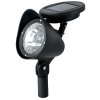churchhaze
Well-Known Member
It's definitely been working. I have the relay hooked up now, and so far it's been clicking on reliably.
It would be nice if someone would market this (or an improved version obviously, since I just based this on parts laying around). I remember @Eraserhead talking about how he was looking into a 730nm system for the future.. He could probably take this and make it 1 chip, no problem. Using the counter guod suggested or getting a tiny microcontroller to do it.
The concept is very easy, but it took a long time for the concept to be realized on a DIY level. It's simple, but I have 120V wires soldered onto a strip board. What I need is to have this thing potted! lol (just learned what that is)
It would be nice if someone would market this (or an improved version obviously, since I just based this on parts laying around). I remember @Eraserhead talking about how he was looking into a 730nm system for the future.. He could probably take this and make it 1 chip, no problem. Using the counter guod suggested or getting a tiny microcontroller to do it.
The concept is very easy, but it took a long time for the concept to be realized on a DIY level. It's simple, but I have 120V wires soldered onto a strip board. What I need is to have this thing potted! lol (just learned what that is)
Last edited:





